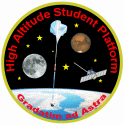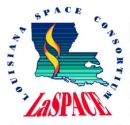



Payload 07 Information
Payload Flight Number:
Institution:
Payload Title:
Ozone IV
Student Leader:
Faculty Advisor:
Payload class:
Small
Payload ID Number:
07
Mass:
2.1 kg
Current:
330 mA
Serial Downlink:
Yes
Analog Downlink:
?
Serial Commands:
Yes
Discrete Commands:
?
Payload Specification & Integration Plan
Due: 06/27/2014
Delivered:
Payload Integration Certification
Scheduled: 08/08/2014
Actual:
Flight Operation Plan
Due: 07/31/2014
Delivered:
Final Flight / Science Report
Due: 12/12/2014
Delivered:
Abstract:
The UND and UNF team have successfully flown payloads on the HASP balloon flights since 2008 and measured the ozone gas profile in the stratosphere. The ozone profiles measured by sensors payload were matched very well with the expected profile. Based on the success and experience, particularly last two best flights and the few known scientific and technical issues of these payloads, the UND-UNF team proposes the HASP 2014 flight for the development of free flying payload to measure ozone profile using improved version of the gas sensor arrays and pollutant gases in the atmosphere and troposphere. The output of the proposed payload will help us for the development of free flying small gas sensors payload instrument for meteorological weather balloon, rocket or sub orbital space vehicle. Further improved 8 Nanocrystalline ITO thin film gas sensors and 8 Nanocomposite ZnO+ITO thin film gas sensors will measure oxidizing ozone gas, 8 Nano-composite WO3+ITO thin film gas sensors will be used for detection of reducing pollutant gases such as CO, CO2, in the atmosphere and troposphere. Temperature controller will be used to control operating temperature of all gas sensors. Three sensors boxes will be mounted on the three sides of rectangular payload body. An ultra violet light sensor will be mounted just below ozone gas sensors box in order to measure amount of photo voltage generated by UV light, which will support the science concept of generation of ozone gas in the presence of UV light. This concept will help us understanding the effect of any dark shadow on the gas sensors, particularly at the time of sunset and also how much ozone gas concentration decrease at the night time. In addition, a temperature sensor to measure outside ambient temperature, improved low pressure sensors which can measure about 1 mBar low pressure range and an Government approved GPS which can measure altitude throughout the flight without any blockage of transmission will be mounted on the payload. Payload data communication will be performed by the HASP communication link as well as the Government certified radio, antenna and battery pack. Ozone and pollutant gas sensors will be fabricated and calibrated at UNF and also tested at UND.
Monthly Briefings:
Dr. Patel-UNF-Poster2014-v5.pptx UND-UNF_Dr. Patel-FSGC2014.pdf UND-UNF_Report_April_2014.pdf UND-UNF_Report_August_2014.pdf UND-UNF_Report_February_2014.pdf UND-UNF_Report_January_2014.pdf UND-UNF_Report_June_2014.docx UND-UNF_Report_March_2014.pdf UND-UNF_Report_May_2014.pdf UND-UNF_Report_November_2014.pdf UND-UNF_Report_October_2014.pdf UND-UNF_Report_September_2014.pdf |